Carlo Scarpa Venice Biennale
The great Venetian architect Carlo Scarpa carried out a series of particularly interesting installations and interventions for the Biennale during the postwar period from 1948 to 1972 In 1948 Scarpa curated the installation of the Guggenheim collection, as well as the distinctive lay out of the Paul Klee room His work linked contemporary architecture to the specificity of the Venetian environment and its traditional craftsmanship.

Carlo scarpa venice biennale. Carlo Scarpa was an Italian architect, influenced by the materials, landscape, and the history of Venetian culture, and Japan Scarpa translated his interests in history, regionalism, invention, and the techniques of the artist and craftsman into ingenious glass and furniture design Carlo Scarpa, an admirer of Frank Lloyd Wright, is studying his drawings in Venice, 1954 Castelvecchio, stairs by Carlo Scarpa Museo di Castelvecchio in Verona Photo by Paolo Monti, 19. S Anna Viebrock, Architects, Venice Biennale, ron Betsky, Venice Biennale Posted on May 24, 17 Tattoos and Tombs Carlo Scarpa’s Great Small Architecture. A Carlo Scarpa guide to Venice Heading to La Serenissima for the art?.
May 24, 13 In 1953 Graziano Gasparini, Venezuelan commissioner for the Biennale, asked Carlo Scarpa to design a pavilion for Venezuela In January 1954, the pavilion design is approved and the structure is roughly completed by October, while the XXVII Biennale is finishing Only by 1956 the pavilion finishings are completed It is conceived as three volumes sliding against each other. Covered courtyard for the exhibition of sculptures, giardino delle sculture, central biennale pavilion, venice architect carlo scarpa, the idea of using direct sunlight to articulate the sculptures, one of the more controversial ideas of scarpa's canova museum, just had to come from the temporary exhibitions where scarpa did so much of his research this could easily be the place, the sculpture garden in the italian biennale pavilion even devoid of sculptures and filled. The Italian pavilion courtyard, Venice Biennale, By the early 1950s Scarpa began focusing on architecture, creating several outstanding structures including the sculpture garden and Venezuelan Pavilion for the 26th Venice Biennial Many of Scarpa’s subsequent commissions involved reinterpretations or renovations of existing buildings.
The Venezuelan Pavilion was designed by the Italian architect Carlo Scarpa () Scarpa was born in Venice, where he attended the Academy of Fine Arts, where he focused on architectural studies His work is influenced by the materials, landscape, and the history of Venetian culture, as well as Japanese culture. Poster for the 1948 Venice Art Biennale, the first after the end of the Second World War An important and undertold chapter in Guggenheim’s story is her exhibition at the 1948 Venice Art Biennale, a joint effort with architect Carlo Scarpa A new exhibition paying homage to this collaboration is helping to revise Guggenheim’s legacy. Covered courtyard for the exhibition of sculptures, giardino delle sculture, central biennale pavilion, venice architect carlo scarpa, the idea of using direct sunlight to articulate the sculptures, one of the more controversial ideas of scarpa's canova museum, just had to come from the temporary exhibitions where scarpa did so much of his research this could easily be the place, the sculpture garden in the italian biennale pavilion even devoid of sculptures and filled.
In 1949 the great architect Carlo Scarpa drew up a project redesigning the access bridge, atrium, ground floor and garden It was not implemented until a decade later and is now one of the most successful examples of modern architectural restoration in Venice The thcentury saw several projects that were to change the face of various sites, both famous and obscure, throughout the city. From the collaboration with the Venini. Until 1947, Carlo Scarpa worked closely with the Venini glass master s He created many new styles and thoroughly modernized the ancient tradition of glassblowing These glass objects were exhibited internationally as well as in Italy, such as at the Milan Triennale and at the Venice Biennale during the 1930s and 1940s.
Carlo Scarpa, an internationally renowned Italian designer and architect, has always been deeply attached to his hometown, Venice From his studies to the direction of the Istituto Universitario di Architettura di Venezia, nowadays Universita' IUAV, a breeding ground for designers, architects and artists;. In 1940 he participated in the Venice Biennale, and in 1956 he cooperated with IVR Mazzega Following the finding of some of Scarpa's sketches and drawings, on August 12 the exhibition "Carlo Scarpa Venini " was opened to the public on the island of San Giorgio Maggione in Venice. The bestloved Venetian architect of the th century, Carlo Scarpa () left his personal stamp on numerous works in the Lagoon city Here’s where you can find some of Scarpa’s works while strolling through Venice’s calli.
The Grand Prizes were abandoned and more emphasis went to thematic exhibitions instead of monographic ones. Carlo Scarpa L’architetto e le arti Gli anni della Biennale di Venezia , Orietta Lanzarini Marsilio, Venezia 03 (pp 250, € 27,00) Orietta Lanzarini’s book on the relationship between Carlo Scarpa and the Venice Biennale has interest far beyond this facet of the famous architect’s work for the Venice organisation. Campo Santa Maria della Misericordia, Venice October (15) September (15) August (15) July (15) June (18) May (24).
Carlo Scarpa This window designed by the famous Venetian architect Carlo Scarpa (1906 – 1978) has been hidden for decades The curators Yvonne Farrell and Shelley McNamara discovered it just by chance and revealed it Venice Biennale 21 Internat Architecture Exhibition, 22 May 21 November 21 Curator Hashim Sarkis Venice. Carlo scarpa, biennale ticket booth, venice 1952 ticket booth, venice 1952 architect carlo scarpa, this photo was uploaded with a CC license and may be used free of charge and in any way you see fit if possible, please name photographer "SEIERSEIER" if not, don't the scarpa set Article byJames Brendan Butler. Many people visiting the Venice Biennale will walk past this building without taking much notice of its architecture Those who take notice may have no idea that this is an early Carlo Scarpa design and one of the few that is a new freestanding building rather than a renovation, alteration or addition to a historic building In 1951 the Venice City Council allowed the Biennale an expansion within the Giardini to allow for new pavilions for countries that did not yet have exhibition spaces.
The Venice Biennale (/ ˌ b iː ɛ ˈ n ɑː l eɪ,l i /;. Italian La Biennale di Venezia la bienˈnaːle di veˈnɛttsja;. M Barovier, Carlo Scarpa, Glass of an Architect, Milan, 1998, p 275 for a period image of the.
But don't forget to take a look at the city's architecture too Just like the Venice Biennale, the Venetian architect Carlo Scarpa demonstrated how a city can be both antique and thoroughly uptodate The th century Italian architect was, writes Robert McCarter our book’s introduction, “deeply embedded in the. The most relevant years were the 1950’s60’s, due to the presidency of Giuseppe Mazzariol, a Modern Art Professor at Ca’ Foscari Venice University, who commissioned Carlo Scarpa the renovation of the ground level often flooded by high tide and the garden. However, it was the 1940 Biennale that had a special significance.
Imre Makovecz Hungarian Pavilion, Seville 1992;. Carlo Scarpa (2 June 1906 – 28 November 1978) was an Italian architect, influenced by the materials, landscape, and the history of Venetian culture, and Japan Scarpa translated his interests in history, regionalism, invention, and the techniques of the artist and craftsman into ingenious glass and furniture design. The Venezuelan Pavilion was designed by the Italian architect Carlo Scarpa () Scarpa was born in Venice, where he attended the Academy of Fine Arts, where he focused on architectural studies His work is influenced by the materials, landscape, and the history of Venetian culture, as well as Japanese culture.
From the collaboration with the Venini glass factory in Venice to the exhibition of his creations at the Venice Biennale, up to the Olivetti shop in Piazza San Marco. Through continuous research alongside the master glass blowers headed by Venini, Scarpa designed series of glass pieces shown at the Venice Biennale, beginning with the 1934 exhibit Some of these designs are still produced today, including bollicine (bubbles), mezza filigrana (halffiligree), and sommersi (overlaid) Scarpa continued to exhibit at the 1936 and 1938 Biennales;. Carlo Scarpa designed the sculpture garden for the central pavilion of La Biennale di Venezia in 1952 The pavilion itself was designed in 1932 by Duilio Torres The little garden is located in the back of the pavilion, near the library It isn’t clearly indicated, so you might have to locate it on your map.
By Luca Onniboni The Carlo Scarpa Biennale’s entrance and ticketoffice was designed on the occasion of the XXVI Venice Biennale, , the venetian Architect was commissioned to design and implement a series of interventions and accommodations including a new entrance and a new ticket office The requirement of the project, dictated by the then secretary general Rodolfo Pallucchini, was to create a structure that would not impede the perspective view of the great avenue of access to. Search Carlo Scarpa’s Designs For The Venice Biennale, Giardini (02) Carlo Scarpa’s Designs For The Venice Biennale. What’s OnItineraries to Carlo Scarpa’s locations, a Vocal Skyline in Piazza San Marco, emerging designers and contemporary craftsmanship with Venice Stuff, the theatre of Ancò Groggia the days of celebration and culture are about to start in Venice Carlo Scarpa in Venice November 19.
These glass objects were exhibited internationally as well as in Italy, such as at the Milan Triennale and at the Venice Biennale during the 1930s and 1940s The exhibition ‘La Pelle del Vetro Carlo Scarpa alla Venini ’ at the Olivetti showroom on San Marco shows some of his glass designs for Venini The 15 objects, vases and. The Venezuelan Pavilion was designed by the Italian architect Carlo Scarpa () Scarpa was born in Venice, where he attended the Academy of Fine Arts, where he focused on architectural studies His work is influenced by the materials, landscape, and the history of Venetian culture, as well as Japanese culture. Glassworks by Architect Carlo Scarpa on Display in Venice At the newly opened exhibition space at Le Stanze Del Vetro ("Rooms for Glass"), hundreds of Carlo Scarpa's works from his time overseeing glassmaker Venini will be on display through November s Architects, Residential Architect, Carlo Scarpa Posted on October 18, 11.
From 1948 to 1972, Italian architect Carlo Scarpa did a series of remarkable interventions in the Biennales exhibition spaces The protests of 1968 marked a crisis for the Biennale;. Carlo Scarpa – The Venezuela Pavilion At The Venice Biennale, Venezuela Pavilion (1996) La Biennale di Venezia. Carlo Scarpa, an internationally renowned Italian designer and architect, has always been deeply attached to his hometown, Venice From his studies to the direction of the Istituto Universitario di Architettura di Venezia, nowadays Universita' IUAV, a breeding ground for designers, architects and artists;.
Carlo scarpa, architect biennale sculpture garden, giardino delle sculture, venice covered courtyard for the exhibition of sculptures, central biennale pavilion, venice architect carlo scarpa, with spaces like this at the biennale, who can spend time looking at yet another load of renderings and photoshop collages?. ArcDog Film Ticket booth for the Venice Biennale I Carlo Scarpa Project Ticket booth for the Venice Biennale Architect Carlo Scarpa Year 1952 Location V. The clear influence of oriental architecture on Scarpa is the subject of the exhibit “Carlo Scarpa and Japan”, promoted by the Fondazione MAXXI and now visitable at the Centro Carlo Scarpa in Treviso Over the same time, Carlo Scarpa entered into a group of intellectuals and artists orbiting around the Venice Biennale, for which he would.
DESCRIPTION – Venice Carlo Scarpa Tour Nowadays, Venice, the city of the lagoon, is above all the capital of the Biennale which has transformed it all year long into a privileged destination for contemporary art and architecture The starting point of our tour will be St Mark’s Square From there we will transfer to the Querini Stampalia Foundation by Carlo Scarpa. Carlo Scarpa may just be among some of the most underappreciated architects of the th century His work is strongly inspired by history, materials, inventions and landscape, as well as both the Japanese and Venetian culture Our private guided tour will show you Scarpa’s most noteworthy works and give a look inside of his life, techniques and influences. Carlo Scarpa (June 2, 1906 November 28, 1978) is best known for his instinctive approach to craft and materials, with an eye for exquisite detailing Venice Art Biennale 19 Salone del.
Carlo Scarpa ‘s collaboration with the Biennale from 1948 onwards has been almost continuous, both in setting out of onemanshows (that by Klee in 1948 was memorable) and in the alterations made from time to time in the Italian pavilion and elsewhere. Architect He was born in Venice, Italy Among his most significant projects The Olivetti store in Venice, the headquarters of the Banca Popolare in Verona, Brion Cemetery in Vito di Altivole, Museo Castelvecchio at Verona and VenezuelaPavillion for the Biennale of Venezia He died in a banal accident in Sendai,. 1980 The Presence of the Past;.
Carlo Scarpa This window designed by the famous Venetian architect Carlo Scarpa (1906 – 1978) has been hidden for decades The curators Yvonne Farrell and Shelley McNamara discovered it just by chance and revealed it On the right, the room of Lacaton & Vassal (see the previous page) © Photo Haupt & Binder. 1975 The first exhibitions curated by Vittorio Gregotti;. Poster for the 1948 Venice Art Biennale, the first after the end of the Second World War An important and undertold chapter in Guggenheim’s story is her exhibition at the 1948 Venice Art Biennale, a joint effort with architect Carlo Scarpa A new exhibition paying homage to this collaboration is helping to revise Guggenheim’s legacy.
Biennale pavilion for venezuela, venice architect carlo scarpa, a single photo from the biennale pavilion for venezuela to support my claims of scarpa's affinity with the new brutalists of the fifties the building is falling apart, by the way an image of the country itself, perhaps?. • The Venice architecture biennale runs until 25 November • This article was amended on 28 May 18 because an earlier version referred to “the great mid19th century Venetian architect Carlo. F Deboni, Venini Glass, Milan, 1996, np, pl 43 for the model in the Catalogo Blu;.
May 24, 13 In 1953 Graziano Gasparini, Venezuelan commissioner for the Biennale, asked Carlo Scarpa to design a pavilion for Venezuela In January 1954, the pavilion design is approved and the structure is roughly completed by October, while the XXVII Biennale is finishing Only by 1956 the pavilion finishings are completed It is conceived as three volumes sliding against each other. In 1952, Carlo Scarpa designed the Sculpture Garden for the Venice Biennale within a patio of the Italian Pavilion, originally designed in 1932 by Duilio Torres The little garden plays with light, shadow and water Three heavy elliptical columns support a canopy roof which is shaped as if three circles would have been subtracted from a rectangle. Carlo Scarpa Italian architect Carlo Scarpa was born on 2 June 1906 in Venice Son of a school teacher, Scarpa initially went to Technical High School and later got enrolled at the Royal Academy of Fine Arts in 1919.
M Barovier, Carlo Scarpa, Glass of an Architect, Milan, 1998, p 275 for a period image of the Venini presentation at the XXI Venice Biennale, 1938;. Other examples illustrated M Barovier, R Barovier Mentasti, A Dorigato, Il Vetro di Murano alle Biennali , 1995, p 44 for a period image of the Venini presentation at the XXI Venice Biennale, 1938;. A Venini Diaz de Santillana, Venini Catalogue Raisonné , Milan, 00, p 242, pl 43 for the model in the Catalogo Blu;.
Carlo scarpa, architect biennale sculpture garden, giardino delle sculture, venice covered courtyard for the exhibition of sculptures, giardino delle sculture, central biennale pavilion, venice architect carlo scarpa, the idea of using direct sunlight to articulate the sculptures, one of the more controversial ideas of scarpa's canova museum, just had to come from the temporary exhibitions where scarpa did so much of his research this could easily be the. The living room of the 1963 Casa Scatturin, in Venice, with walls of calce rasata lucida — a limeplaster finish developed by Carlo Scarpa and the artisan Eugenio De Luigi — a thick concrete. Through continuous research alongside the master glass blowers headed by Venini, Scarpa designed series of glass pieces shown at the Venice Biennale, beginning with the 1934 exhibit Some of these designs are still produced today, including bollicine (bubbles), mezza filigrana (halffiligree), and sommersi (overlaid) Scarpa continued to exhibit at the 1936 and 1938 Biennales;.
Carlo Scarpa Sculpture Garden, Venice Biennale (1 Gothic versus Classic 4 two Venetian palazzi;. In English also called the "Venice Biennial") refers to an arts organization based in Venice and the name of the original and principal biennial exhibition the organization presents The organization changed its name to the Biennale Foundation in 09, while the. 1981 Architecture in Islamic Countries;.
May 24, 13 In 1953 Graziano Gasparini, Venezuelan commissioner for the Biennale, asked Carlo Scarpa to design a pavilion for Venezuela In January 1954, the pavilion design is approved and the structure is roughly completed by October, while the XXVII Biennale is finishing Only by 1956 the pavilion finishings are completed It is conceived as three volumes sliding against each other. Covered courtyard for the exhibition of sculptures, giardino delle sculture, central biennale pavilion, venice architect carlo scarpa, the idea of using direct sunlight to articulate the sculptures, one of the more controversial ideas of scarpa's canova museum, just had to come from the temporary exhibitions where scarpa did so much of his research this could easily be. However, it was the 1940 Biennale that had a special significance.
ArcDog Film Ticket booth for the Venice Biennale I Carlo Scarpa Project Ticket booth for the Venice Biennale Architect Carlo Scarpa Year 1952. In 1948 (and until 1972) bagan Carlo Scarpa's direct collaboration with La Biennale, which generated over the years a long series of remarkable projects and achievements In 1968 Carlo Scarpa projects a loft in the central hall of the Pavilion, doubling the exhibition surface. What’s OnItineraries to Carlo Scarpa’s locations, a Vocal Skyline in Piazza San Marco, emerging designers and contemporary craftsmanship with Venice Stuff, the theatre of Ancò Groggia the days of celebration and culture are about to start in Venice.
The great Venetian architect Carlo Scarpa carried out a series of particularly interesting installations and interventions for the Biennale during the postwar period from 1948 to 1972 In 1948 Scarpa curated the installation of the Guggenheim collection, as well as the distinctive lay out of the Paul Klee room His work linked contemporary architecture to the specificity of the Venetian environment and its traditional craftsmanship. Carlo Scarpa in Venice November 19 On 28, 29 and 30 November 19 , for Carlo Scarpa’s Death anniversary, conferences and guided tours have been organized in Venice all over the locations of the great architect the Querini Stampalia Foundation , the Olivetti Store of FAI Fondo Ambiente Italiano, the Ca ‘Foscari University and Iuav. Carlo scarpa, architect biennale pavilion for venezuela, venice biennale pavilion for venezuela, venice architect carlo scarpa, a single photo from the biennale pavilion for venezuela to support my claims of scarpa's affinity with the new brutalists of the fifties the building is falling apart, by the way an image of the country itself, perhaps?.
Carlo scarpa, biennale ticket booth, venice 1952 ticket booth, venice 1952 architect carlo scarpa, this photo was uploaded with a CC license and may be used free of charge and in any way you see fit if possible, please name photographer "SEIERSEIER" if not, don't the scarpa set. The Carlo Scarpa Biennale’s entrance and ticketoffice was designed on the occasion of the XXVI Venice Biennale, , the venetian Architect was commissioned to design and implement a series of interventions and accommodations including a new entrance and a new ticket office The requirement of the project, dictated by the then secretary general Rodolfo Pallucchini, was to create a.

Carlo Scarpa S Architecture Of Experience Pavilion Architecture Architecture Galleries Architecture

Gallery Of Spotlight Carlo Scarpa 5
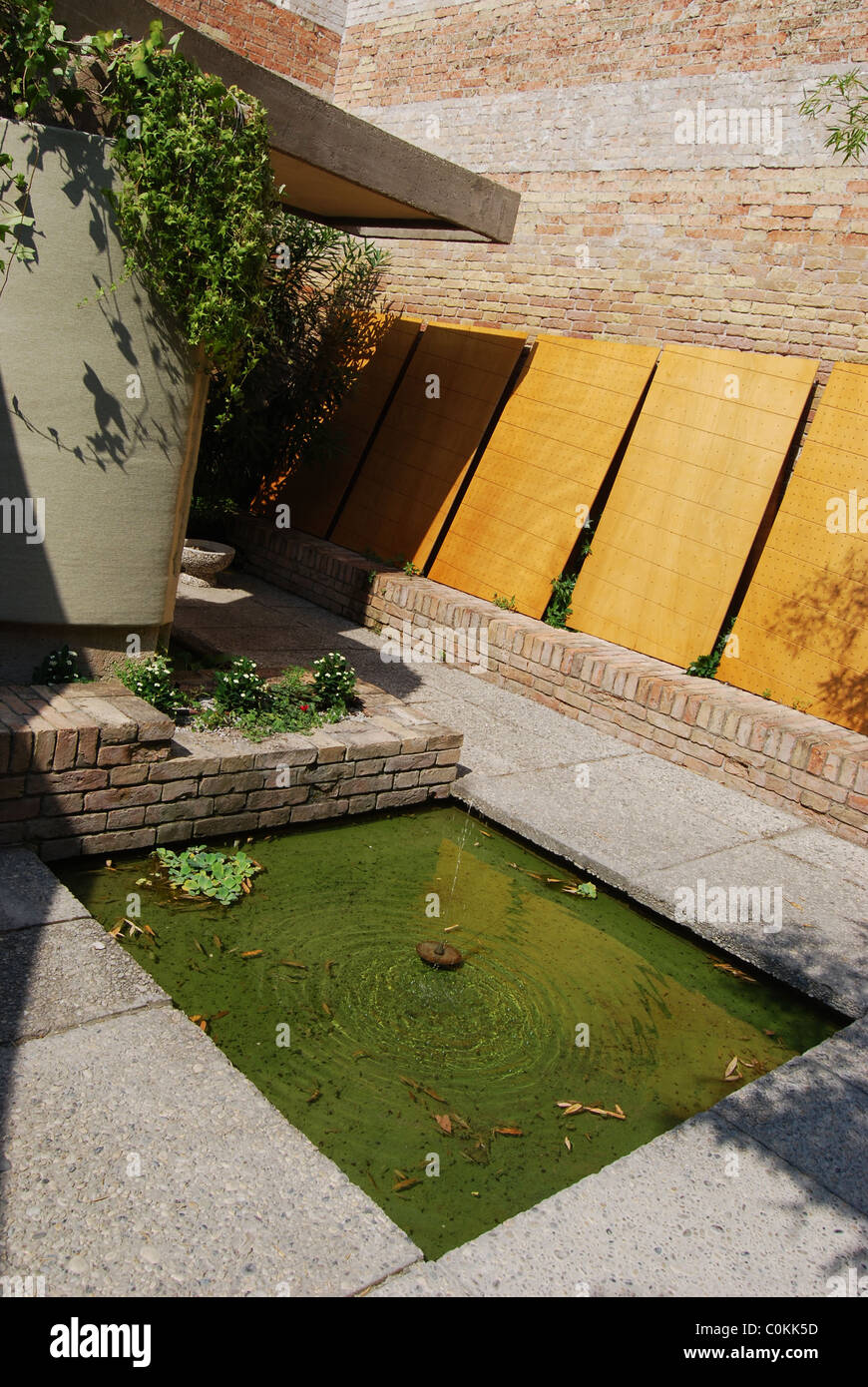
Sculpture Garden By Carlo Scarpa Venice Biennale Stock Photo Alamy
Carlo Scarpa Venice Biennale のギャラリー

Carlo Scarpa Lorenzo Zandri Venezuela Pavilion Biennale Di Venezia Divisare

Graham Foundation Grantees Francesco Dal Co

Arcdog Arcdog Film Venezuelan Pavilion Carlo Scarpa Labiennale Image C Arcdog Venezuelan Pavilion Venice Biennale Carloscarpa Scarpa Venice Venezia Italy Arcdogfilm Architecture Architect Film Arcdog Filmmaking

Carlo Scarpa Lorenzo Zandri Venezuela Pavilion Biennale Di Venezia Divisare
1
Tattoos And Tombs Carlo Scarpa S Great Small Architecture Architect Magazine
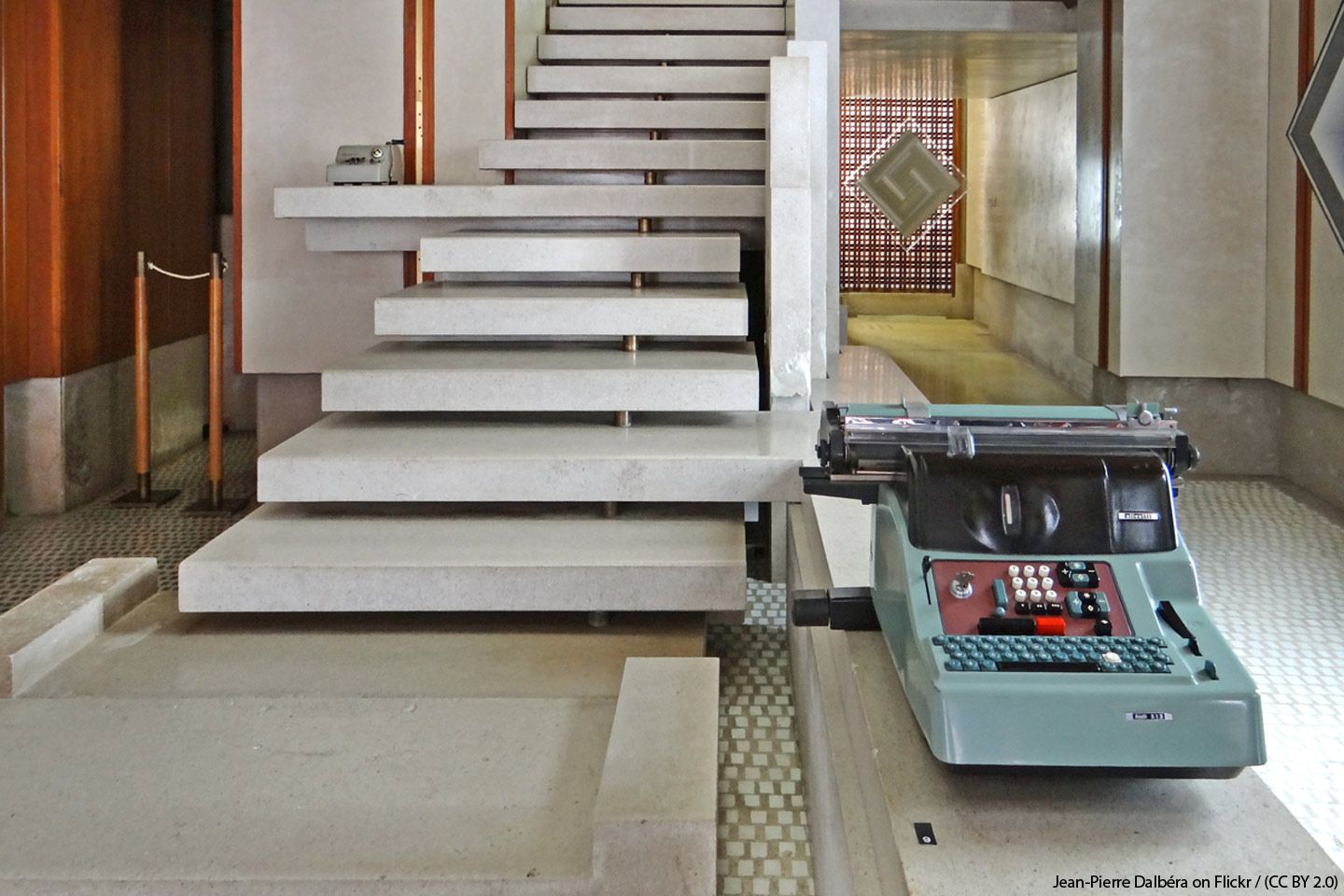
Architecture Tour In Venice Carlo Scarpa Tour Artchitectours

Carlo Scarpa Lorenzo Zandri Venezuela Pavilion Biennale Di Venezia Divisare

Carlo Scarpa Nostra Italia

Ticket Booth For The Venice Biennale I Carlo Scarpa Youtube

Www Archipicture Eu Carlo Scarpa Venice Biennale Ticket Booth

Www Archipicture Eu Carlo Scarpa Sculpture Garden For The Venice Biennale

Fondazione Querini Stampalia By Carlo Scarpa Cate St Hill

Click To Return Architettura Giardino Edifici

Discover The Hidden Venice With Carlo Scarpa Venezia Da Vivere

Carlo Scarpa Venice High Resolution Stock Photography And Images Alamy

1948 Venice Biennale Peggy Guggenheim Collection

5 Places To Admire Carlo Scarpa S Work In Venice The 500 Hidden Secrets

5 Places To Admire Carlo Scarpa S Work In Venice The 500 Hidden Secrets

Italian Biennale Pavilion Courtyard Venice By Carlo Scarpa 02 Stephen Varady Photo C Stephenvarady Architraveller

Explore Venice In The Steps Of Carlo Scarpa The Venice Insider

Discover The Hidden Venice With Carlo Scarpa Venezia Da Vivere

A Carlo Scarpa Guide To Venice Architecture Phaidon

Who Was Carlo Scarpa The New York Times
Tattoos And Tombs Carlo Scarpa S Great Small Architecture Architect Magazine

Discover The Hidden Venice With Carlo Scarpa Venezia Da Vivere

Explore Venice In The Steps Of Carlo Scarpa The Venice Insider

Carlo Scarpa An Italian Icon
Guttae Carlo Scarpa Sculpture Garden Venice Biennale 1952

Yw5ef

Architecture In Venice Italy Editorial Photography Image Of City Exterior
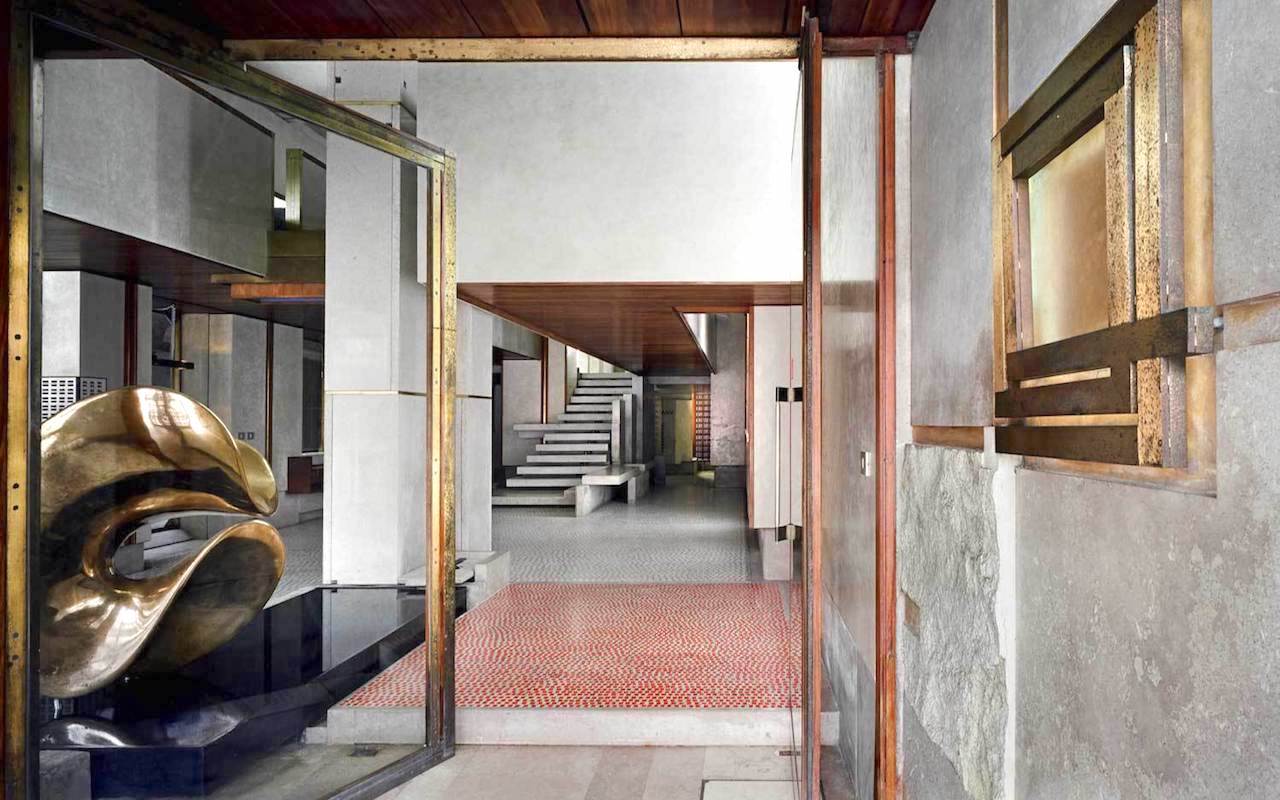
Discover The Hidden Venice With Carlo Scarpa Venezia Da Vivere

Venezuela Biennale Pavilion Venice By Carlo Scarpa 01 Stephen Varady Photo C2a9 2 Jpg My Art Guides

Italian Pavillion For The Biennale In Venice By Carlo Scarpa Guido Cirilli Duilio Torres Stock Photo Picture And Rights Managed Image Pic Mdo Agefotostock

Carlo Scarpa Venice Tourism

Sculpture Garden Venice Biennale Carlo Scarpa A Photo On Flickriver

Arcdog Arcdog Film Venezuelan Pavilion Carlo Scarpa Labiennale Image C Arcdog Venezuelan Pavilion Venice Biennale Carloscarpa Scarpa Venice Venezia Italy Column Arcdogfilm Architecture Architect Film Arcdog Filmmaking

Sculpture Garden By Carlo Scarpa Venice Biennale Stock Photo Alamy

Ritorno Return 10 Wilfried Lentz Rotterdam Wilfried Lentz Rotterdam

Pin On Carlo Scarpa

Carlo Scarpa Archives Archipanic

Carlo Scarpa Wikipedia

Dialogo Carlo Scarpa And Ettore Sottsass Presented By Charles Zana Fai At The Olivetti Boutique Venice Mousse Magazine

Biennale Di Venezia Carlo Scarpa Incontra Bruno Giacometti Venice Biennale Carlo Scarpa Meets Bruno Giacometti Gallery Andrea Banzato

Ticket Booth For The Venice Biennale I Carlo Scarpa Arcdog

Rome Exhibition Of Drawings By Carlo Scarpa For The Biennale Domus

Explore Venice In The Steps Of Carlo Scarpa The Venice Insider

Www Archipicture Eu Carlo Scarpa Sculpture Garden For The Venice Biennale

Venezuelan Upheaval Delays Pavilion At Venice Biennale Venice Biennale 19 The Guardian

Who Was Carlo Scarpa The New York Times

The Architecture Of Details Palazzo Querini Stampalia By Carlo Scarpa The Strength Of Architecture From 1998
File Padiglionebiennalevenezia Carloscarpa Jpg Wikipedia

File Carlo Scarpa Stand Pour La Biennale De Venise Jpg Wikimedia Commons

Carlo Scarpa Wikiwand

The Architecture Of Details Palazzo Querini Stampalia By Carlo Scarpa The Strength Of Architecture From 1998

Finding Scarpa The Present Tense
Guttae Carlo Scarpa Sculpture Garden Venice Biennale 1952

Venice Architecture Tours Walking Guide E Architect

File Carlo Scarpa Architect Biennale Pavilion For Venezuela Venice 1954 1956 Jpg Wikimedia Commons

Carlo Scarpa Biennale Ticket Booth Venice 1952 Stock Photo Alamy

Carlo Scarpa Architect Biennale Ticket Booth Venice 1952 Carlo Scarpa Architect Architecture

Highlights From The 16th Venice Architecture Biennale Texas Architect Magazine

La Biennale Di Venezia 53 International Art Exhibition Fondazione Nicola Trussardi

Spotlight Carlo Scarpa Archdaily

Sculpture Garden For The Venice Biennale Architectuul

This Venetian Home Is Inspired By The Work Of Carlo Scarpa
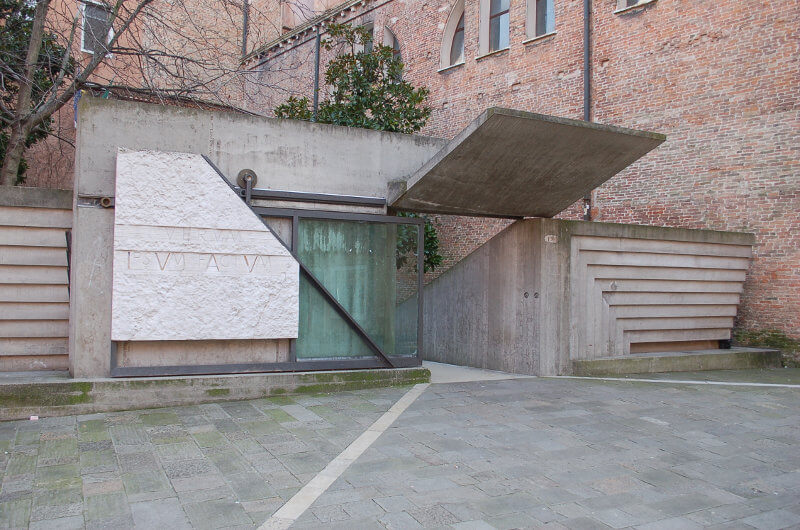
Discover The Hidden Venice With Carlo Scarpa Venezia Da Vivere

Ticket Booth For The Venice Biennale I Carlo Scarpa Arcdog

Venice Venezuela Biennale Pavilion Italy Stephenvarady Architraveller

Scarpa Biglietteria Della Biennale Carlo Scarpa Architecture Venice Biennale

Carlo Scarpa Biennale S Entrance And Ticketoffice In Venice Archiobjects

File Carlo Scarpa Architect Biennale Pavilion For Venezuela Venice 1954 1956 Jpg Wikimedia Commons

Venice Venezuela Biennale Pavilion Italy Stephenvarady Architraveller

Carlo Scarpa Lorenzo Zandri Venezuela Pavilion Biennale Di Venezia Divisare

Carlo Scarpa Freespace Giardini 16th Venice Architecture Biennale

The Renovation Of The Fondazione Querini Stampalia By Carlo Scarpa

Carlo Scarpa Biennale S Entrance And Ticketoffice In Venice Archiobjects

Pin On Scarpa Biennale Ticket Pavilion Biglietteria Giardini Venice 1952

Carlo Scarpa Il Padiglione Del Libro Biennale Venezia Italy 1950 Atlas Of Interiors

Explore Venice In The Steps Of Carlo Scarpa The Venice Insider

Italian Biennale Pavilion Courtyard Venice By Carlo Scarpa 01 Stephen Varady Photo C Stephenvarady Architraveller
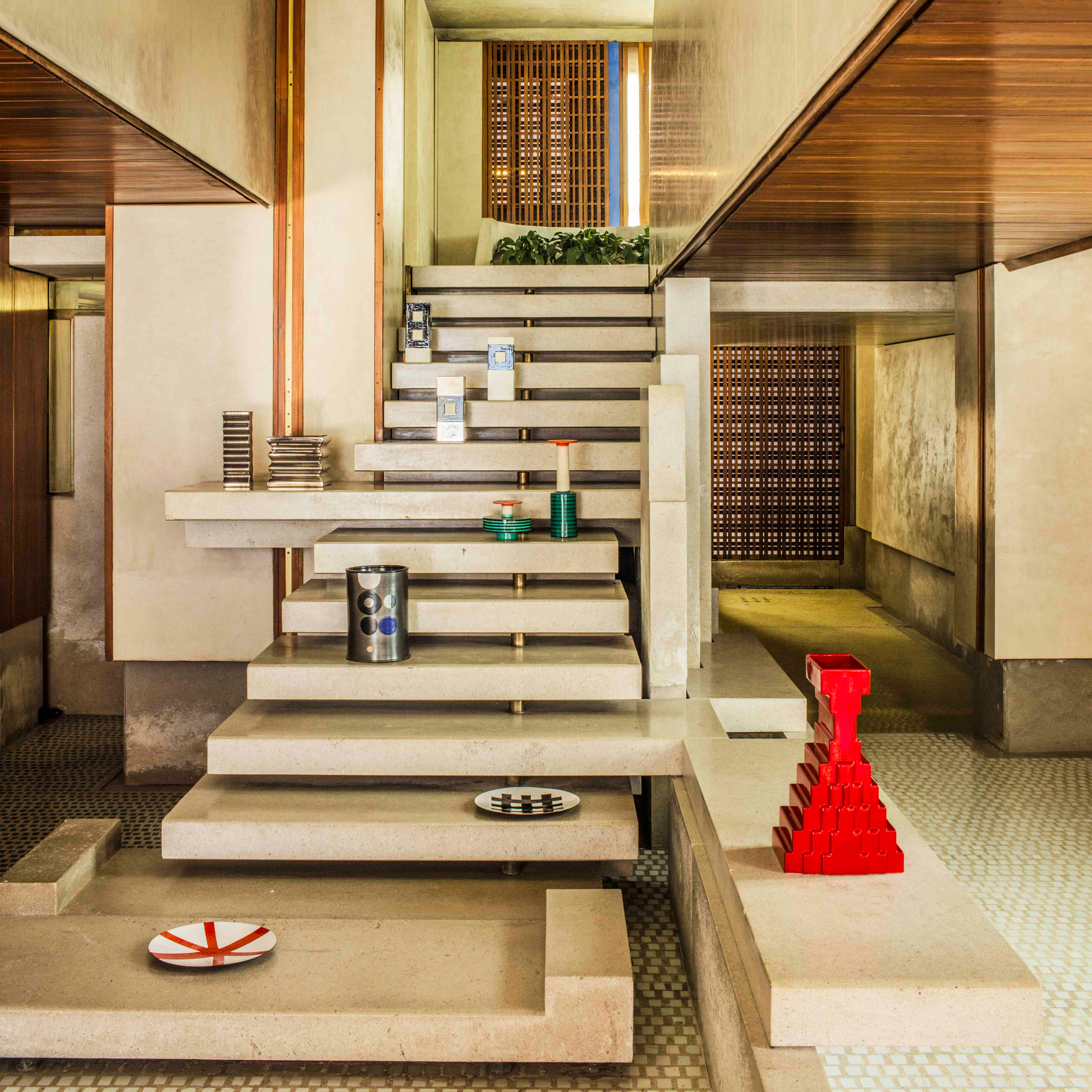
12 Must See Installations And Exhibitions At The Venice Art Biennale 17

Explore Venice In The Steps Of Carlo Scarpa The Venice Insider
Guttae Carlo Scarpa Sculpture Garden Venice Biennale 1952

A Carlo Scarpa Guide To Venice Architecture Phaidon
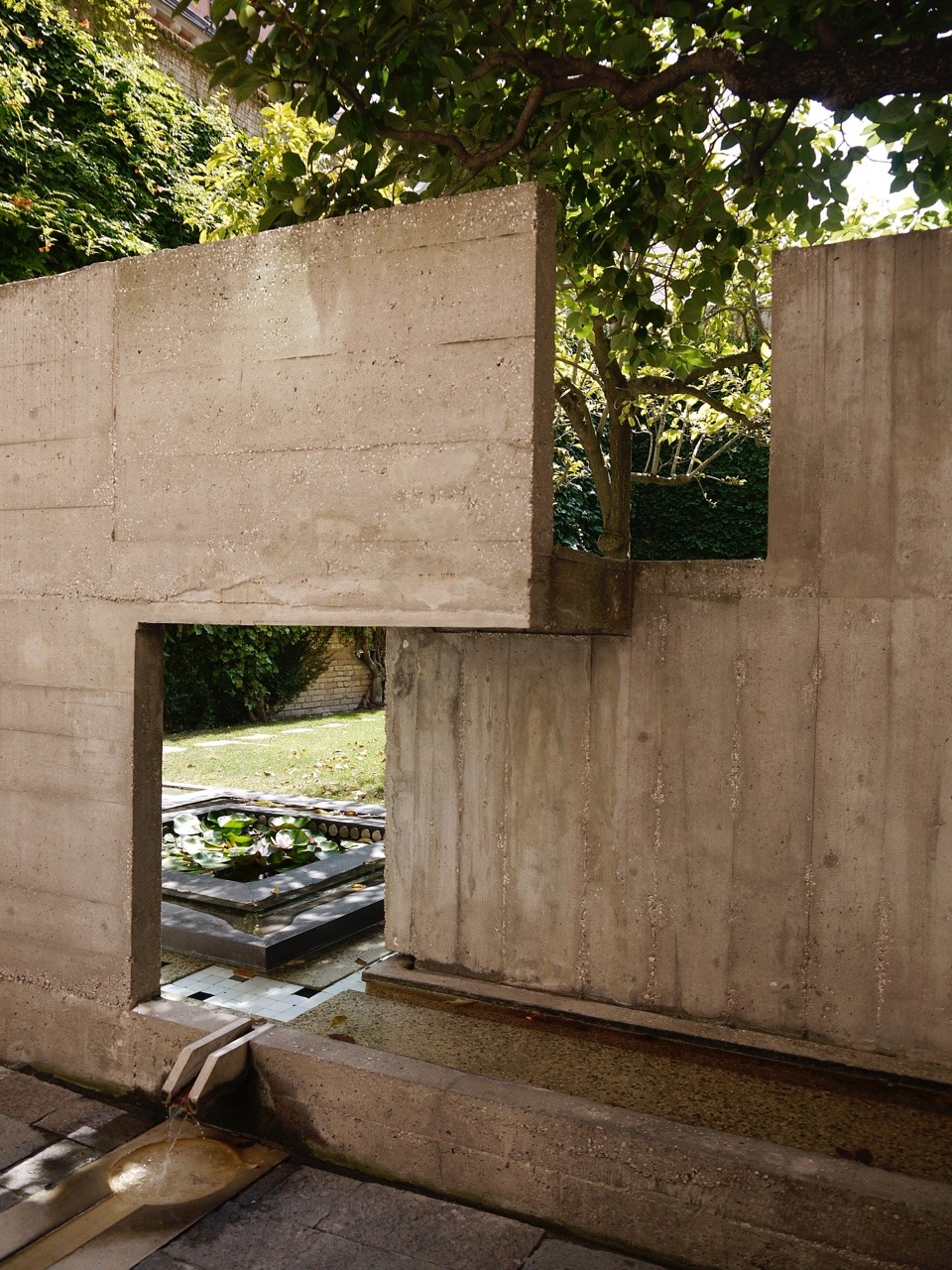
Set Deco Carlo Scarpa Sculpture Garden For The Venice
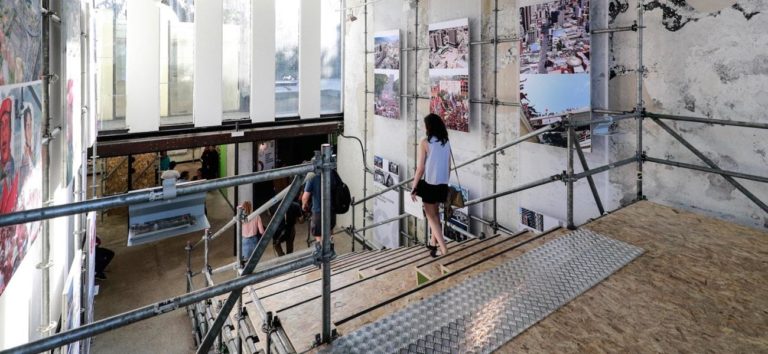
Carlo Scarpa The Venezuela Pavilion At The Venice Biennale The Architecture Biennale Wiki Project

A Carlo Scarpa Guide To Venice Architecture Phaidon

Carlo Scarpa Architect Biennale Sculpture Garden Giardino Delle Sculture Venice 1950 1952 A Photo On Flickriver

Carlo Scarpa Lorenzo Zandri Venezuela Pavilion Biennale Di Venezia Divisare
1

Itinerary On The Paths Of Architect Carlo Scarpa Where Venice
1

Finding Scarpa The Present Tense

File Carlo Scarpa Stand Pour La Biennale De Venise Jpg Wikimedia Commons

In 1952 Carlo Scarpa Designed The Sculpture Garden For The Venice Biennale Within A Patio Of The Italian Pavilion Originally Giardino Architetti Architettura

Venezuelan Pavillon At The Biennale Gardens In Venice By Carlo Scarpa 1954 1956 th Century Stock Photo Picture And Rights Managed Image Pic Mdo Agefotostock
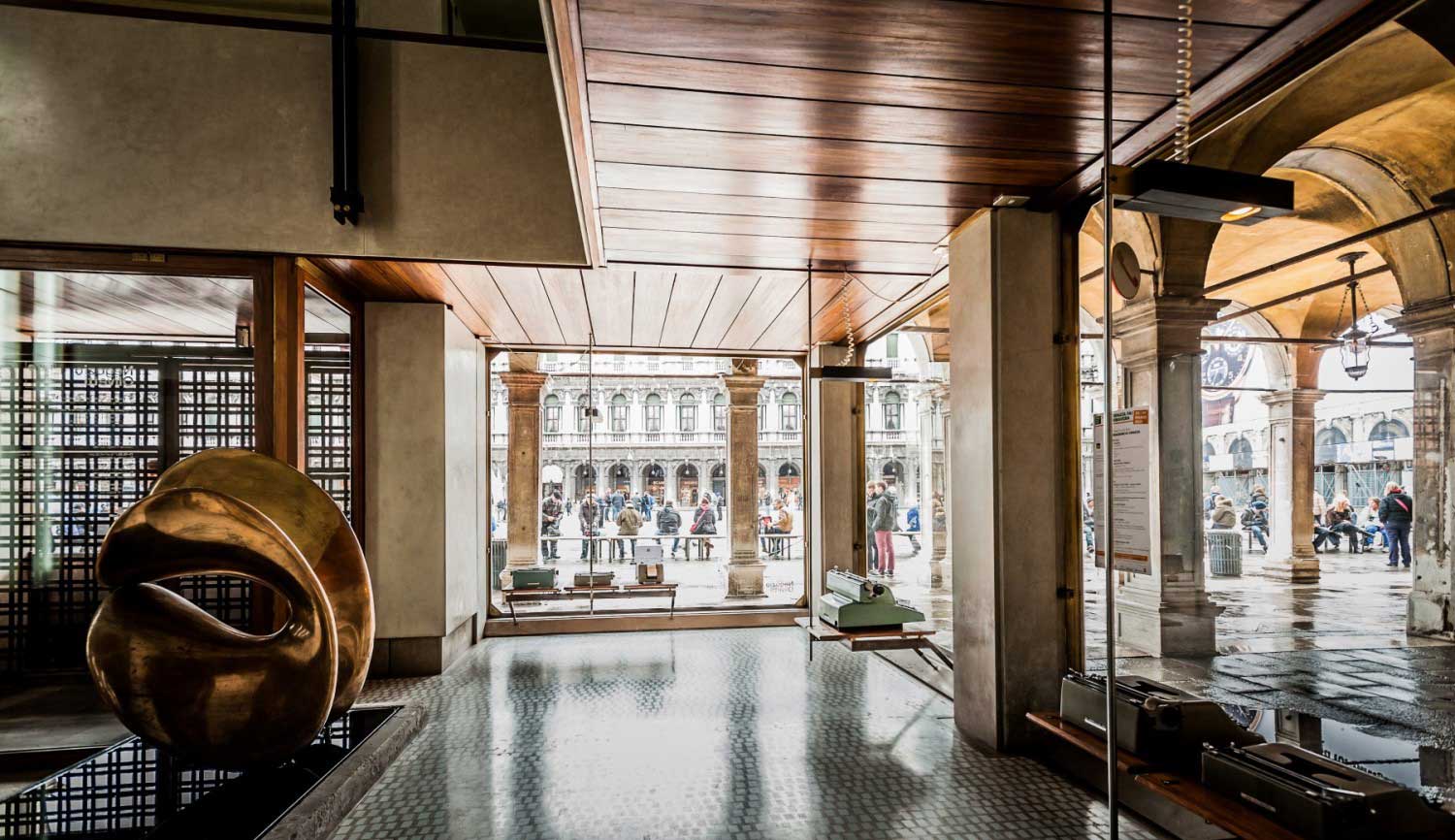
Carlo Scarpa Experience In Venice With Urban Italy

Giardini Della Biennale Venice Gardens Of The Biennale
Fictitious Identities Real Clothes Leslie Dilloway Irenebrination Notes On Architecture Art Fashion Fashion Law Technology




